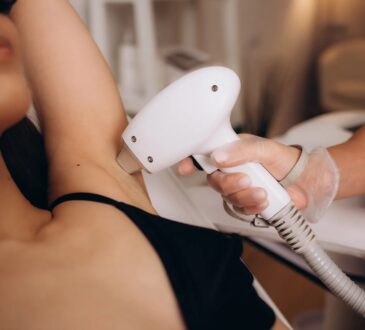
Imagine the joy of keeping your baby close while having your hands free to tackle daily tasks. Yet, for many parents, this dream is marred by aching shoulders, sore backs, and concerns about their baby’s comfort. The wrong baby carrier can transform a precious bonding experience into a painful ordeal, potentially affecting both parent and child’s well-being.
The solution lies in ergonomic design, a game-changing approach that prioritizes both baby and parent comfort through scientifically-backed positioning and weight distribution. As we explore the world of baby carriers, we’ll uncover how safety standards have evolved, examine innovative carrier solutions, and guide you through choosing the best baby carrier for your unique needs. Whether you’re a new parent or looking to upgrade your current carrier, understanding these essentials will transform your babywearing journey.
Why Ergonomic Design is Non-Negotiable for Baby Carriers
The importance of ergonomic design in baby carriers extends far beyond basic comfort. For developing infants, proper hip positioning is crucial to prevent developmental issues like hip dysplasia, a condition where the hip joint doesn’t form correctly. The ideal carrier supports your baby’s natural “M” position, where their knees are higher than their bottom, creating a stable seat that promotes healthy hip development.
 For parents, ergonomic design prevents the common pitfalls of traditional carriers. A properly designed carrier distributes weight evenly across your shoulders and hips, much like a high-quality hiking backpack. This weight distribution is essential for maintaining proper posture and preventing chronic back pain, particularly during extended wearing periods. The carrier should feature wide, padded shoulder straps that don’t dig in, and a supportive waist belt that transfers weight to your hips—your body’s strongest load-bearing structure.
For parents, ergonomic design prevents the common pitfalls of traditional carriers. A properly designed carrier distributes weight evenly across your shoulders and hips, much like a high-quality hiking backpack. This weight distribution is essential for maintaining proper posture and preventing chronic back pain, particularly during extended wearing periods. The carrier should feature wide, padded shoulder straps that don’t dig in, and a supportive waist belt that transfers weight to your hips—your body’s strongest load-bearing structure.
Key markers of ergonomic excellence include knee-to-knee support that maintains proper hip alignment, adjustable seat width to accommodate growth, and a structured panel that supports your baby’s spine in its natural curve. These features work together to create a carrier that grows with your child while protecting both parent and baby from strain or developmental concerns.
Baby Carrier Types Compared: Finding Your Perfect Fit
Wraps & Slings
Traditional wraps and ring slings offer unparalleled versatility for newborn care. These carriers excel at creating a womb-like environment, perfect for skin-to-skin contact and discrete nursing. The fabric’s adaptability allows for custom-fit positions, though mastering the various wrapping techniques requires patience and practice. While ideal for the early months, some parents find the learning curve steep and weight distribution challenging as babies grow heavier.
Soft Structured Carriers (SSCs)
Soft structured carriers represent the perfect balance of convenience and support for active parents. Leading brands like Momcozy have revolutionized this category with easily adjustable buckles and straps that accommodate quick position changes and growing babies. Their padded shoulder straps and reinforced waist belts make them excellent for extended wear, especially during outdoor activities. Many models feature practical additions like storage pockets, weather protection hoods, and breathable panels for temperature regulation.
Mei Tais & Hybrid Options
Mei Tais bridge the gap between wraps and structured carriers, offering the best of both worlds. These carriers feature a rectangular body panel with long straps that tie around the waist and shoulders. Their semi-structured design provides excellent adaptability between growth stages, making them particularly valuable during rapid development periods. The ability to adjust the seat width and panel height ensures optimal support as your baby grows, while the tie system allows for precise fit customization.
Newborn Safety Essentials in Babywearing
Safety in babywearing begins with understanding the T.I.C.K.S. guidelines – fundamental rules that protect your newborn during every carry. Your carrier should be Tight enough to keep baby secure against your body, preventing slumping which could compromise breathing. Keep your baby In view at all times, allowing you to monitor their color and breathing patterns. Position them Close enough to kiss, ensuring they’re at a height where you can easily check their well-being. The Knees should be higher than their bottom, creating the optimal M-position, while maintaining proper Support for their developing back.
One critical safety concern is the chin-to-chest position, which can restrict your newborn’s airway. Always ensure there’s enough space – at least two finger-widths – between your baby’s chin and chest. Watch for signs of labored breathing, such as grunting sounds or color changes. To achieve a hip-healthy carry, position your baby’s legs in a natural spread-squat position, with knees slightly higher than their bottom. Their thighs should be supported from knee to knee, preventing dangling legs that could strain developing hip joints.
 Regular carrier adjustments are essential as your baby grows and becomes more active. Check all buckles, straps, and fabric positions before each use, ensuring no fabric obstructs your baby’s face or airways. When adjusting positions, always support your baby with one hand while making changes with the other, maintaining secure support throughout the process.
Regular carrier adjustments are essential as your baby grows and becomes more active. Check all buckles, straps, and fabric positions before each use, ensuring no fabric obstructs your baby’s face or airways. When adjusting positions, always support your baby with one hand while making changes with the other, maintaining secure support throughout the process.
Breathable Baby Carriers for All Seasons
Advanced fabric technology has revolutionized baby carrier comfort through strategic ventilation zones and moisture-management systems. Modern carriers incorporate mesh panels in high-heat areas like the mid-back and sides, creating effective airflow channels while maintaining structural support. These breathable zones work alongside moisture-wicking materials that actively draw sweat away from both parent and baby, preventing the uncomfortable clamminess that often leads to heat rash and irritation.
The most effective breathable carriers feature a layered approach to temperature regulation. The outer layer provides sun protection and durability, while the inner layer uses technical fabrics that balance breathability with the softness needed for delicate baby skin. Strategic placement of these materials ensures maximum ventilation where needed most – typically around the baby’s core and parent’s chest area. Some carriers even incorporate quick-dry properties that maintain comfort during temperature changes or light rain, making them adaptable for year-round use.
Seasonal adaptability comes through removable panels and adjustable features that allow the carrier to transition between weather conditions. Parents can optimize airflow during summer months while maintaining adequate warmth during cooler seasons, ensuring comfortable babywearing throughout the year.
Transformative Benefits of Baby Carriers
Baby carriers offer remarkable developmental advantages that extend far beyond convenience. During carried time, infants experience rich language exposure as they participate in their caregiver’s daily conversations and activities at eye level. This natural positioning stimulates vestibular development – the sensory system responsible for balance and spatial awareness – as babies adjust to their carrier’s gentle movements. Research shows that carried babies cry 43% less than their non-carried counterparts, leading to reduced stress levels for both parent and child.
For parents, particularly those navigating postpartum challenges, babywearing provides invaluable mental health benefits. The close physical contact promotes the release of oxytocin, often called the “bonding hormone,” which can help reduce postpartum depression symptoms and anxiety. This biological response strengthens the parent-child attachment while allowing caregivers to maintain productivity. The ability to complete daily tasks while keeping baby close creates a sense of accomplishment and reduces the isolation many new parents experience.
The skin-to-skin contact facilitated by carriers, especially during the newborn period, regulates infant temperature, heart rate, and breathing patterns. This close contact also supports successful breastfeeding relationships by keeping babies close to their food source and helping mothers recognize early feeding cues. The combined physical and emotional benefits create a foundation for secure attachment and optimal development throughout the crucial early months.
Choosing Your Perfect Ergonomic Carrier
The journey to finding the perfect baby carrier centers on understanding ergonomic design principles that protect both parent and child. A well-designed carrier isn’t just about comfort—it’s an investment in your baby’s physical development and your own well-being. Through proper hip positioning, adequate head support, and even weight distribution, ergonomic carriers create a foundation for healthy growth while preventing parental strain.
Whether you choose a wrap’s intimate embrace for newborn days, an SSC’s versatility for active lifestyles, or a mei tai’s customizable fit, each carrier type offers unique advantages for different phases of your parenting journey. Before making your choice, verify the carrier meets essential safety standards: proper M-position seating, breathable materials, and adjustable support features. Test the carrier’s ventilation by checking for mesh panels and moisture-wicking fabrics, and ensure it maintains proper hip positioning across all carry positions.
Remember, confident babywearing comes from choosing a carrier that aligns with your lifestyle while prioritizing ergonomic support. Trust in your ability to create a safe, nurturing environment for your little one as you embark on this beautiful carrying journey together.




